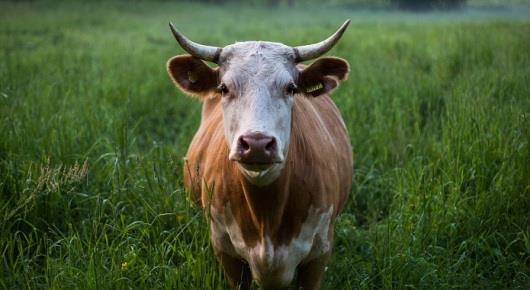Lumpy skin disease prevention and response: a new challenge for Belarus, Moldova and Ukraine

The occurrence of lumpy skin disease (LSD) in the Caucasus and the Russian Federation highlights the potential for further spread to other countries in Eastern Europe. Belarus, the Republic of Moldova and Ukraine make the list of at-risk countries, where establishment of a regional preparedness and response plan is highly needed.
FAO, with solid expertise in the control of lumpy skin disease in the Balkan and Caucasus regions, launches a regional project to strengthen preparedness, prevention and response with a workshop today in Kyiv.
Given that LSD is an exotic disease in these countries, veterinary services here have no previous experience with the vector-borne disease. Potential challenges are serious, including economic losses due to death of cattle, decreases in cattle productivity, the high cost of vaccination campaigns and outbreak management, and most importantly, trade restrictions. The risk of an imminent incursion of this disease into still-unaffected Belarus, the Republic of Moldova and Ukraine is very high, considering their shared borders.
Today’s workshop brings together state veterinary specialists, national and international FAO experts, national institutions, and international agencies.
“It is very important to reduce the risks of further incursion and spread of the LSD virus, particularly to countries that are currently free from this disease and are therefore not familiar with it,” said Andriy Rozstalnyy, an animal production and health officer at the FAO Regional Office for Europe and Central Asia. “This is why the FAO project is here. Our key aim is to enhance capacities of national veterinary services for LSD early detection, prevention and control and strengthen regional cooperation for early warning and response to this transboundary disease, as well as raise awareness among field veterinarians, farmers and academia.”
FAO’s approach to disease control is based on a close monitoring of the disease situation through continuous risk assessment, harmonization of prevention and control measures, introduction of joint vaccination programmes and creation of regional platforms through which countries can share information, best practices and lessons learned. The current project will unite leading experts to find specific solutions to each country’s circumstances, exploring new approaches for risk mitigation and outbreak control if needed.
FAO has already developed a contingency plan template for LSD to aid veterinary services in the development of their own national contingency plans specific to the country. This plan will be a key instrument for preparedness and control of the disease within the project. A manual for field veterinarians has also been developed and translated into Romanian, Russian and Ukrainian, which will be printed and distributed to field veterinarians in the three countries.
This two-day workshop will be followed by a train-the-trainer program for ten field veterinarians on LSD, which will be replicated within at-risk oblasts in Ukraine and for a number of national veterinary consultants from the three recipient countries.
30 May 2018, Kyiv, Ukraine
